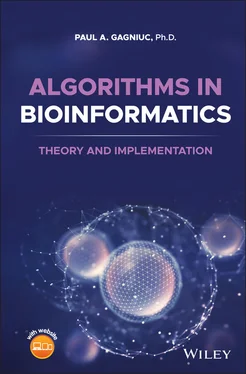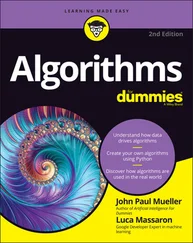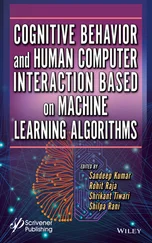Paul A. Gagniuc - Algorithms in Bioinformatics
Здесь есть возможность читать онлайн «Paul A. Gagniuc - Algorithms in Bioinformatics» — ознакомительный отрывок электронной книги совершенно бесплатно, а после прочтения отрывка купить полную версию. В некоторых случаях можно слушать аудио, скачать через торрент в формате fb2 и присутствует краткое содержание. Жанр: unrecognised, на английском языке. Описание произведения, (предисловие) а так же отзывы посетителей доступны на портале библиотеки ЛибКат.
- Название:Algorithms in Bioinformatics
- Автор:
- Жанр:
- Год:неизвестен
- ISBN:нет данных
- Рейтинг книги:3 / 5. Голосов: 1
-
Избранное:Добавить в избранное
- Отзывы:
-
Ваша оценка:
- 60
- 1
- 2
- 3
- 4
- 5
Algorithms in Bioinformatics: краткое содержание, описание и аннотация
Предлагаем к чтению аннотацию, описание, краткое содержание или предисловие (зависит от того, что написал сам автор книги «Algorithms in Bioinformatics»). Если вы не нашли необходимую информацию о книге — напишите в комментариях, мы постараемся отыскать её.
Explore a comprehensive and insightful treatment of the practical application of bioinformatic algorithms in a variety of fields Algorithms in Bioinformatics: Theory and Implementation
global
local sequence alignment, forced alignment
Sequence logos, Markov chains
Self-Sequence alignment, Objective Digital Stains
Spectral Forecast
Discrete Probability Detector
Self-sequence
Objective Digital Stains
Spectral Forecast
Algorithms in Bioinformatics: Theory and Implementation
Algorithms in Bioinformatics — читать онлайн ознакомительный отрывок
Ниже представлен текст книги, разбитый по страницам. Система сохранения места последней прочитанной страницы, позволяет с удобством читать онлайн бесплатно книгу «Algorithms in Bioinformatics», без необходимости каждый раз заново искать на чём Вы остановились. Поставьте закладку, и сможете в любой момент перейти на страницу, на которой закончили чтение.
Интервал:
Закладка:
But why a discussion about the size of organisms? Mass diffusivity (diffusion coefficient) is a physical constant that impacts the way an organism can evolve. The cell volume must be balanced with the cell surface; otherwise, the exchange with the external environment becomes inefficient. This exchange consists of metabolites that must exit the cell per unit time or nutrients that must enter the cell per unit time. Multicellularity allows an organism to exceed the size limits normally imposed by diffusion. On the other hand, unicellular organisms with increased size have a decreased surface-to-volume ratio and may have difficulty in absorbing and transporting sufficient nutrients throughout the cell. As a counterbalance, unicellular eukaryotic organisms have among the most varied shapes and sizes observed in nature. Both unicellular and multicellular organisms can achieve a high surface-to-volume ratio by favoring DNA mutations that lead to a convoluted surface. For instance, to increase their surface area, choanocyte organisms can take many forms, such as C. taxifolia, which resembles a kind of “pine leaf” or S. fragilissima, which has a convoluted surface.
1.12 The Origins of Eukaryotic Cells
All eukaryotic cells contain membrane-bound organelles (e.g. the nucleus, mitochondria, chloroplasts, and so on). The complexity of the eukaryotic cell is given by the presence and the interaction of organelles. The origin of organelles has always been a mystery difficult to explain. However, the endosymbiotic theory is the leading evolutionary theory for the origin of eukaryotic cells. The idea of endosymbiosis was first proposed by Konstantin Mereschkowski in 1905 [96, 97]. According to the theory of endosymbiosis, the eukaryotic cell is like a Matryoshka (Russian doll). A symbiotic relationship where one organism lives inside the other is known as endosymbiosis. The term “primary endosymbiosis” refers to the engulfment and retention of a prokaryote organism by another prokaryote or eukaryote organism. The term “secondary endosymbiosis” refers to one eukaryote organism having engulfed and retained another eukaryote organism with an organelle already obtained by primary endosymbiosis. Note that today the endosymbiotic behavior is most beautifully observed in protists (e.g. Paramecium bursaria ).
1.12.1 Endosymbiosis Theory
The last universal common ancestor (LUCA) was likely a population of unicellular organisms that led to the emergence of two domains in prokaryotes: Bacteria and Archaea. It seems that LUCA were complex unicellular organisms and not the immediate descendants of primeval cells. Rumor “has it” that prokaryotes are the descendants of LUCA by reductive evolution [98]. Nevertheless, evidence shows that about 2 billion years ago, eukaryotic cells may have evolved from a merger between the two prokaryotic domains. Endosymbiosis theory suggests a scenario in which an archaeal cell engulfed a bacterial cell. This kind of merger was repeated independently many times and eventually evolved to form all the membrane-bound organelles, including the mitochondria and chloroplasts. The last eukaryotic common ancestor (LECA) was likely a population of unicellular organisms that eventually (i.e. within 300 million years of LECA) led to a diversification of eukaryotes in supergroups (around 1.5–2 billion years ago) [99, 100]. Today, existing prokaryotic groups reveal the intermediate steps in the eukaryotic-cell evolution [101]. Moreover, complex archaea that bridge the gap between prokaryotes and eukaryotes have been found [102].
1.12.2 DNA and Organelles
Prokaryotic organisms of the distant past are perhaps the ancestors of almost all membrane-bound organelles that are found today inside the eukaryotic cells. Among the membrane-bound organelles, some contain their own genome and others lost their genome throughout evolution [103]. The adaptation to the intracellular environment led to the loss of many of the original genes accumulated for environmental survival. Other important genes from the organelles have been transferred to the nucleus over the evolutionary timeline. Organellar DNA transfer to the nucleus is a known process by which, during evolution, some critical genes of the organelles are moved for preservation and synchronization of cell division [104, 105]. But why preservation ? The DNA mutation rate is lower in the nucleus. In some important organelles, high concentrations of reactive oxygen species (ROS) can lead to oxidative stress and DNA damage [106, 107]. Thus, the relocation of a gene from the organelle to the nucleus enables a more secure conservation over time. Moreover, the transfer process also leads to an obligate codependency. The relocated genes control the division of the organelles (synchronization) and encode products that interact with organelle-encoded proteins. In turn, the genes still present in the organellar genome encode proteins that interact with nuclear proteins [108]. Ultimately, the organelle interacts with its own evolved genes physically present in the nucleus of the cell. Nevertheless, some of these DNA containing organelles still are organisms in their own right; genetically equipped for the environment imposed by the cytoplasm of the host cell. Intracellular signaling pathways that coordinate gene expression between organellar and nuclear genomes are highly complex; toward almost complicated [109]. Moreover, additional signaling pathways exist between different organellar genomes [109]. These complications may be one of the reasons for the reductive evolution of the organellar genomes. However, many organelles retained a large part from their ancestral genome. Thus, different equilibrium states between organellar and nuclear genomes must exist. Moreover, contrary to certain sedimented expectations, prokaryotic organisms also may contain organelles with special arrangements; for instance organelles such as magnetosomes, chlorosomes, pirellulosomes, anammoxosomes, carboxysomes, and so on [110–112].
1.12.3 Membrane-bound Organelles with DNA
Mitochondria arose approximately 2.3–1.8 billion years ago from a unicellular organism related to modern α-proteobacteria. Bacterial species Rickettsia prowazekii of the genus Rickettsia is probably the closest phylogenetic relative to the mitochondria [113, 114]. Also, ATP production in Rickettsia is the same as that in mitochondria. On the other hand, plastids (i.e. chloroplasts and chloroplast-like organelles) arose 1.6–1.5 billion years ago from the ancestors of cyanobacteria [115]. That is, a mitochondriate eukaryote became host to a cyanobacterium-like prokaryote. Organelles with their own genomes, such as plastids and mitochondria, are found in most eukaryotic cells [116]. A multicellular eukaryote contains hundreds to thousands of these organelles in each cell. The number of organelles is specific to each cell type and may vary depending on the state/metabolic needs of the cell.
1.12.4 Membrane-bound Organelles Without DNA
How much of the genome can be transferred to the nucleus or can be permanently lost in evolution? The complete loss of DNA in an organelle is a possibility. Among the organelles that have lost their genome in evolution is the hydrogenosome. Hydrogenosomes are cell organelles that have a double membrane and synthesize ATP via hydrogen-producing fermentations [117]. Hydrogenosomes were once mitochondria and are a classic example of complete mitochondrial genome loss [118]. Considering the hydrogenosome example, it is reasonable to assume that all eukaryotes may contain an organelle of mitochondrial ancestry [119]. However, DNA in the hydrogenosomes of some anaerobic ciliates has been detected [120]. Ciliates are protists with hair-like organelles (i.e. cilia) used for propulsion and adherence inside liquid media. Cases of genome-containing hydrogenosomes show that these organelles are somewhere toward the end of their reductive evolution period. It can also mean that the loss of the genome is not just a one-way street, which would have important implications for elucidating the occurrence of life on Earth. A basic question arises when considering the above: Are the genome-less hydrogenosomes organisms in their own way? This is an interesting question because it shows the versatility of life and the ideas discussed in the “ Philosophical transactions ” chapter or in the “ Viruses vs. the spark of metabolism ” subchapter.
Читать дальшеИнтервал:
Закладка:
Похожие книги на «Algorithms in Bioinformatics»
Представляем Вашему вниманию похожие книги на «Algorithms in Bioinformatics» списком для выбора. Мы отобрали схожую по названию и смыслу литературу в надежде предоставить читателям больше вариантов отыскать новые, интересные, ещё непрочитанные произведения.
Обсуждение, отзывы о книге «Algorithms in Bioinformatics» и просто собственные мнения читателей. Оставьте ваши комментарии, напишите, что Вы думаете о произведении, его смысле или главных героях. Укажите что конкретно понравилось, а что нет, и почему Вы так считаете.












